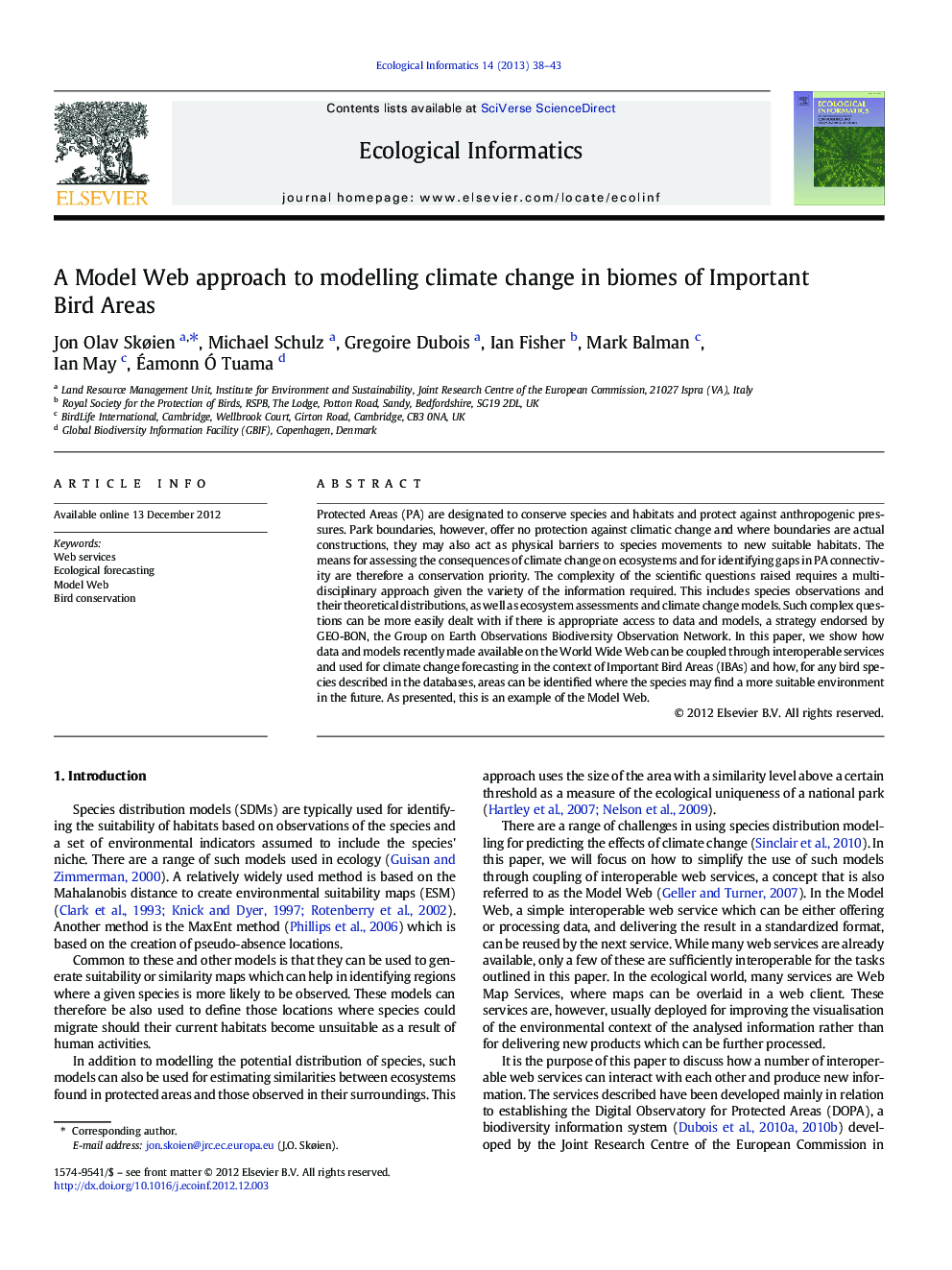| Article ID | Journal | Published Year | Pages | File Type |
|---|---|---|---|---|
| 4375043 | Ecological Informatics | 2013 | 6 Pages |
Protected Areas (PA) are designated to conserve species and habitats and protect against anthropogenic pressures. Park boundaries, however, offer no protection against climatic change and where boundaries are actual constructions, they may also act as physical barriers to species movements to new suitable habitats. The means for assessing the consequences of climate change on ecosystems and for identifying gaps in PA connectivity are therefore a conservation priority. The complexity of the scientific questions raised requires a multi-disciplinary approach given the variety of the information required. This includes species observations and their theoretical distributions, as well as ecosystem assessments and climate change models. Such complex questions can be more easily dealt with if there is appropriate access to data and models, a strategy endorsed by GEO-BON, the Group on Earth Observations Biodiversity Observation Network. In this paper, we show how data and models recently made available on the World Wide Web can be coupled through interoperable services and used for climate change forecasting in the context of Important Bird Areas (IBAs) and how, for any bird species described in the databases, areas can be identified where the species may find a more suitable environment in the future. As presented, this is an example of the Model Web.
